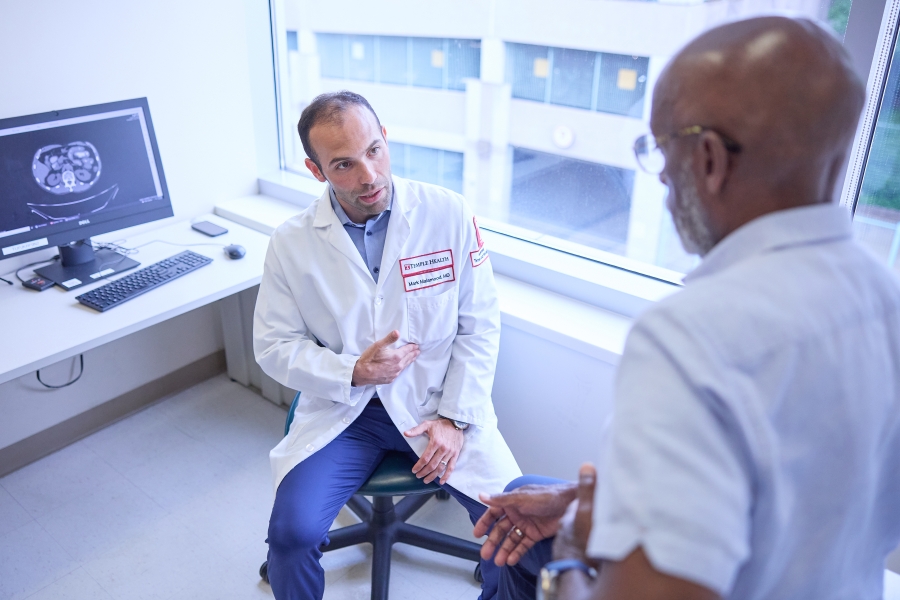Runners can experience pain and injury from their choice of activity at many levels — feet, shins, calf, knee, thigh, hip and back. In this blog, we'll cover a variety of injuries that can affect runners and joggers of all levels.
Frequently, runners are susceptible to injury when:
- Starting a new running program
- Returning to running following an injury
- Increasing distance or speed
Factors such as training and shoe choice can often be controlled to help minimize these risks, but there are some anatomical contributors that can also affect your running health. We'll aim to identify the factors you can control to keep you involved, and when to seek a sports medicine specialist for your pain or injury.
Experiencing Hamstring Pain and Injury
One issue runners may often experience is hamstring pain or tightness. While not always debilitating, high hamstring pain — or pain that occurs near the origin of the hamstring muscles — can sometimes lead to chronic issues. This includes problems with sitting or even numbness or tingling down the back of the leg.
When hamstring pain and injury becomes chronic, the door is also opened to multiple other problems that can inhibit your progress — sometimes presenting in hip flexor pain/tightness, iliotibial band syndrome, and back pain that can throw off your training routine.
Hamstring injuries can range from tightness and mild strain to a complete rupture with fiber disruption. These types of injuries can vary from acute in nature, related to a single action or movement, to chronic issues such as muscular fatigue or overuse tendinopathies.
Risk Factors
Factors contributing to the susceptibility of hamstring injuries include:
- Age
- Muscular tightness
- Muscular fatigue
- Muscular imbalances
- Insufficient warm-up
- Previous injuries
Lack of flexibility is often named a contributing factor to hamstring injury, but can also occur as a result of acute injury. In addition, hip flexor tightness may also contribute to higher risk of hamstring injuries.
The challenge in managing and avoiding reinjury of the hamstrings is frequently related to the timing of returning to activities and adhering to a good maintenance program for maintaining both strength and flexibility. Returning to full activity too soon after a hamstring injury can place you at risk of not only recurrent injury, but possibly more extensive injury as well.
Treating High Hamstring Pain
Non-Surgical Treatment
The non-surgical treatment of hamstring injuries usually begins with basic principles of rest, ice, compression and elevation to treat the acute inflammation. The goal here is to minimize pain and further injury to the area. It may be necessary to refrain from running following the onset of hamstring pain until your symptoms improve.
The use of non-steroidal anti-inflammatories (NSAIDs) is also often recommended for symptom control and for tendinitis-type injuries. However, long-term use of NSAIDs can lead to other problems, so it's important to monitor and use as directed.
Once the acute inflammation can be controlled, the treatment goals should shift to preventing muscular atrophy and promoting healing. Early pain-free active motion is essential to minimizing adhesion within the connective tissue, but should not be forced.
Exercises
Hamstring-strengthening exercises should be initiated, with knee flexion and hip extension-based exercises such as hamstring curls, hip extension and hip bridges. It's also important to address any related or contributing factors such as core weakness, gluteus inhibition, hip flexor/psoas tightness or iliotibial band issues. This will help prevent possible future injury and improve your all-around running health.
Returning to Your Running Routine
Once pain-free motion and strengthening are achieved, the next phase of rehabilitation is returning to your prior level of activity — without reinjuring the hamstring. The balance and timing of this phase can be difficult. The goal is to restore your strength and flexibility while advancing to a jogging progression that will return you to your prior level of distance/speed safely.
Following the return to your normal mileage and pace, a maintenance program that includes stretching, strengthening and a global hip and core program are essential to avoiding reinjury.
Other Treatment Options
Your physician may also recommend other interventions including corticosteroid injections. While these are still used in some cases, there are potential risks of tendon rupture and infection. There is also evidence that corticosteroid can sometimes interfere with muscle regeneration.
There is also the availability of minimally invasive treatments such as autologous conditioned plasma (ACP) or platelet rich plasma (PRP), dry needling, and acupuncture. These treatments may be beneficial in treating some chronic injuries, but should be discussed with a sports medicine doctor if you are interested in pursuing these options.
In cases where symptoms begin to interfere with daily activities such as walking and sitting, surgical intervention may be discussed to address the chronic hamstring syndrome. Proximal hamstring surgery is a specialized procedure, and you should seek out the professional opinion of an experienced orthopaedic surgeon to discuss surgical intervention and the post-operative recovery.
Request an appointment with our Sports Medicine Program today or call 800-TEMPLE-MED (800-836-7536).
